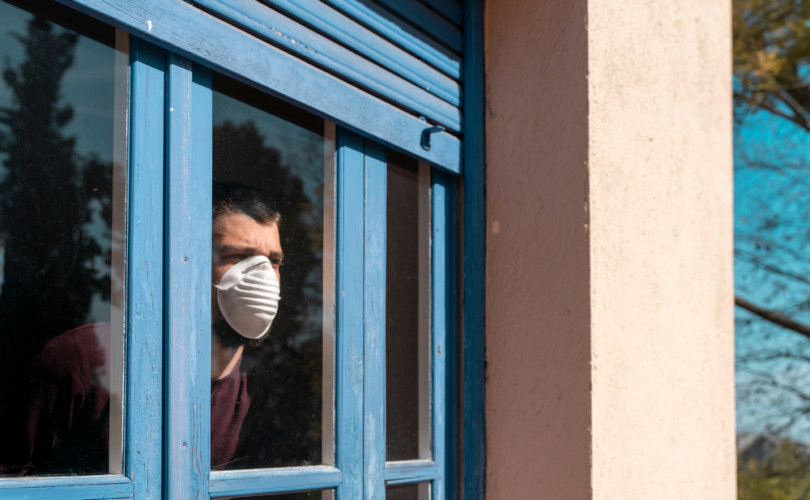November 19, 2020 (LifeSiteNews) — The American Institute for Economy Research (AIER) released a report yesterday affirming that virtually all aspects of day-to-day life have been harmed by the COVID-19 lockdowns. The report, containing evidence compiled from various studies, assesses the damage inflicted by the lockdowns across a spectrum of quality-of-life issues, including mental health, the economy, unemployment, crime, and education.
Mental Health
CDC numbers released in August revealed that adults’ suicidal thoughts more than doubled, with 10.7 percent reporting thoughts of suicide compared with 4.3 percent in 2018, and a whopping one in four young adults ages 18-24 reporting suicidal ideation in late June. At that time, 40 percent of American adults said they were struggling with mental health. Anxiety symptoms had tripled, and depression symptoms had quadrupled compared with 2019 rates.
Children have not been immune from the mental health toll of the lockdowns either. The CDC reported that mental health-related emergency room visits shot up by 24 percent for children age 5-11, and by 31 percent for children age 12-17, compared with 2019.
Unemployment
Quite remarkably, the unemployment rate increase to 14.7 percent in April 2020 was reported to be the highest rate of unemployment, and the “largest over-the-month increase” since 1948, when these data were first recorded.
The pandemic’s impact seems to have hit the lower-income bracket particularly hard. “In March, 39 percent of people living with a household income of $40,000 and below reported a job loss.”
The food and hospitality industry received such a blow that the report devoted a section just to their losses. The restaurant industry alone was reported as “set to lose” eight million employees in 2020.
Loss of childcare during the COVID-19 crisis has also taken its toll. “One out of four women who were surveyed reported their job loss was due to lack of childcare, twice the rate of men surveyed,” reported The Washington Post.
Crime
While the media and politicians focus on the number of deaths associated with COVID-19, deaths resulting from crime increased substantially during the lockdowns. A 53 percent increase in homicides was reported for the period of June through August by the National Commission on COVID-19 and Criminal Justice, which was an apparent surge from already-increased homicide numbers.
Statistics released by the FBI in September revealed that murder and non-negligent manslaughter offenses increased by 14.8 percent during the first half of 2020. There have been spikes in reports of domestic abuse as well, as indicated by a 25 percent increase in calls made to the U.K. domestic abuse charity Refuge since the onset of lockdowns.
Health care
The report revealed marked decreases in diagnoses, referrals, and treatment for diseases other than COVID-19. For example, the Journal of the American Medical Association (JAMA) reported a 75 percent decrease in U.K. suspected cancer referrals since the beginning of COVID-19 restrictions, and a 46.4 percent decline in diagnoses for six cancers in the United States since 2018.
“When cancer becomes more advanced before it is detected, it becomes a ticking time bomb,” noted Debra Patt, MD, Ph.D, the lead author of a study on the impact of Covid-19 on cancer care.
“The decrease in screenings, diagnosis, and treatments this year will lead to later-stage cancers for patients, increasing morbidity and mortality for years to come.”
Lockdowns getting stricter
In many parts of the world, lockdowns are getting stricter after a surge in positive COVID-19 tests in recent weeks. Austria has essentially placed residents under house arrest, with certain exceptions for basic grocery shopping, and several other reasons.
In the United States, Republican Ohio Gov. Mike DeWine announced a curfew from 10 p.m. to 5 a.m. for the next three weeks, starting today.
The Pennsylvania Department of Health, led by a man pretending to be a woman, indicated that masks need to be worn at home, “where another person or persons who are not members of the individual’s household are present in the same space, irrespective of physical distance.”
More states have begun to implement other restrictions ahead of Thanksgiving Day next week.

